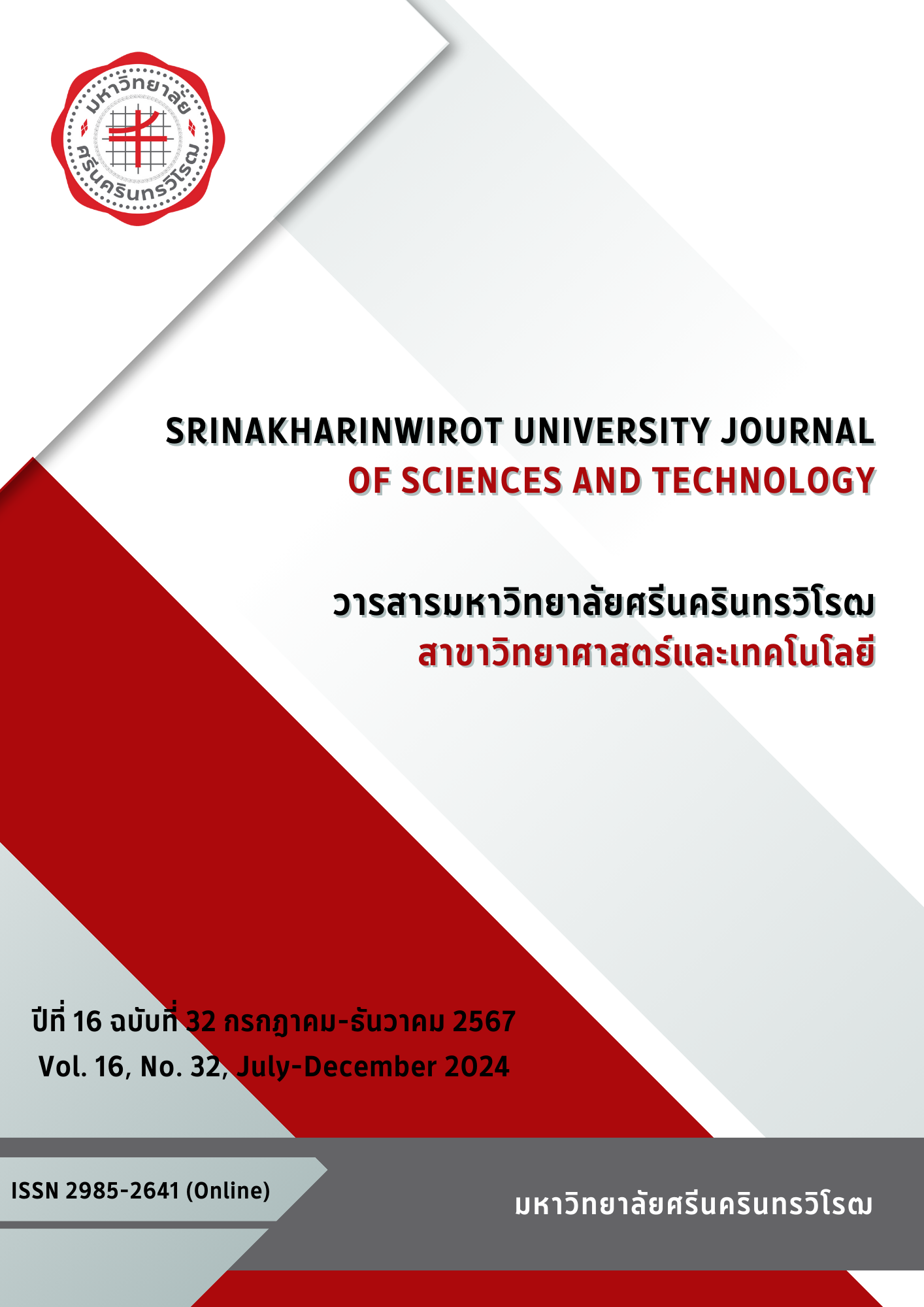FORECASTING DIRECTION AND ANALYZING DENGUE FEVER RISK AREA BY USING GEOGRAPHIC INFORMATION AND DATA MINING IN BANG MAE NANG SUB-DISTRICT, BANG YAI DISTRICT, NONTHABURI PROVINCE
Keywords:
Geographic Information, Data Mining, Dengue FeverAbstract
Dengue fever remains the major problem with ongoing outbreaks. Each year, outbreak trends are forecasted and forecasted in advance of and during the outbreak. All at the national level, health zone level, provincial level, and district level to prepare and prevent the outbreaks. The researcher is therefore interested in studying the prediction of outbreak trends and analyzing dengue fever risk areas during the outbreak in the area. The purposes of this research are to analyze the factors related to the forecasting direction of the outbreaks and analyze dengue risk areas, predict the direction of the outbreaks and analyze dengue risk areas, and compare the efficiency and accuracy of the forecasting algorithm in Bang Mae Nang Subdistrict, Bang Yai District, Nonthaburi Province. The data in this study are 235 dengue patients then analyze and join spatial data with attribute data, factors selected were 9 factors consisting of (1) Land used (2) Land parcel (3) Household density (4) age (5) Gender (6) Precise (7) Humidity (8) Temperature and (9) Heat index, then to create the models to forecast use 3 algorithms of data mining technique are (1) Decision Tree: CART(Classification and Regression Tree) (2) Decision Tree: ID3 (Iterative Dichotomiser3) and (3) Random Forest. The results show that the top 3 factors for forecasting are the Land used, Land parcel, and Household density. The result of the prediction of the outbreak direction finds that the model can used to predict and analyze risk areas. The model created using the Decision Tree algorithm is the best model and has an accuracy of 98%. The average overall efficiency is 98%.
Downloads
References
Department of Desease Control. (2022). Dengue. https://ddc.moph.go.th/disease_detail.php?d=44 (In Thai).
Nonthburi Provincial Public Health Office. (2014). Rate of dengue fever per 100,000 people.
Somard, J., Suwanlee, S. R., Turnbull, N., and Phommat, T. (2017). Analyzing dengue fever risk areas using geographic information systems in Dome Pradis Sub-district, Nam Yuen District, Ubon Ratchathani Province. Journal of Medicine and Health Sciences, 24(3), 65-76. https://he01.tci-thaijo.org/index.php/jmhs/article/view/107608/85153 (In Thai).
Rungrattanaubon, J. (2023). Data mining technique. Naresuan University Publishing House (In Thai).
Department of Desease Control. (2022). Guidelines for surveillance, prevention, and control of infectious diseases carried by Aedes mosquitoes. For public health officials 2021. https://online.fliphtml5.com/ bcbgj/nfvi/#p=58 (In Thai).
Tosasukul, J. (2021). A prediction modelling for dengue fever outbreaks using data mining techniques. PKRU SciTech Journal, 5(2), 51-60. https://ph01.tci-thaijo.org/index.php/pkruscitech/article/view/245824/167917 (In Thai).
Hnusuwan, B., Kajornkasirat, S., and Puttinaovarat, S. (2019). Dengue risk mapping from geospatial data using gis and data mining techniques. International Journal of Online and Biomedical Engineering, 16(11), 57-79. https://doi.org/10.3991/ijoe.v16i11.16455
Land Development Department. (2022). Soil service. https://dinonline.ldd.go.th (In Thai).
Open Government Data of Thailand. (2022). Land parcel. https://data.go.th/dataset?organization=land-parcel-center-department-of-lands&res_format=SHP (In Thai).
Thai Meteorological Department. (n.d.). Statistics Reports - Daily. http://www.aws-observation.tmd.go.th/rprt/weatherDays (In Thai).
Romsaiyud, W. (2023). Machine learning for predictive data analytics and applications. Office of The University Press Sukhothai Thammathirat Open University (In Thai).
Ministry of Public Health. (2016). Strategies, indicators, and data collection guidelines Ministry of Public Health Fiscal year 2016. http://data.ptho.moph.go.th/inspec/inspec2559/mophplan_2559_final.pdf (In Thai).
Downloads
Published
How to Cite
Issue
Section
License
Copyright (c) 2024 Srinakharinwirot University Journal of Sciences and Technology

This work is licensed under a Creative Commons Attribution-NonCommercial-NoDerivatives 4.0 International License.
Srinakharinwirot University Journal of Sciences and Technology is licensed Under a Creative Commons Attribution-NonCommercial-NoDerivs 4.0 International (CC-BY-NC-ND 4.0) License, Unless Otherwise Stated. Please Read Journal Policies Page for More Information on Open Access, Copyright and Permissions.



